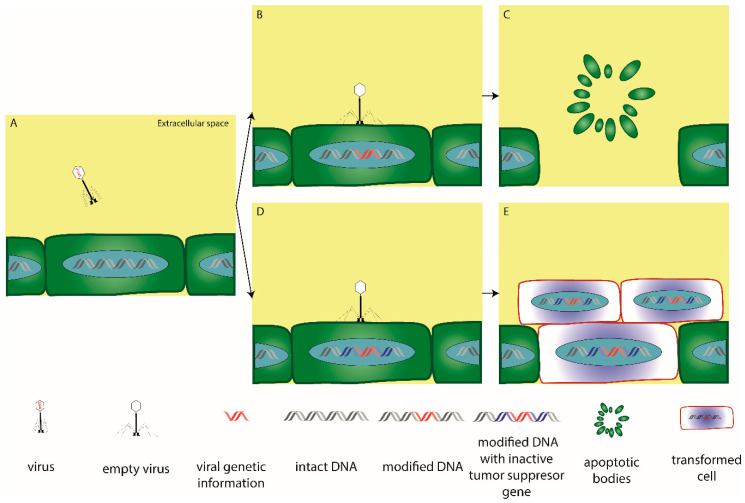Figure 2.
Example of virus-mediated carcinogenesis. A virus can infect a eukaryotic cell (A) and randomly insert its genetic information into the host genome via the lysogenic life cycle (B,D). If the viral genetic material falls in a non-coding region, the modified host DNA continues to function normally until the cell reaches senescence and is removed by apoptosis (C). However, the integration of the viral genome into a region coding a tumor suppressor gene (such as p53 or Rb), can affect cell proliferation/survival and, in combination with other DNA modifications, contribute to uncontrollable cell division, which may result in dysplasia and eventually, cancer (E).

